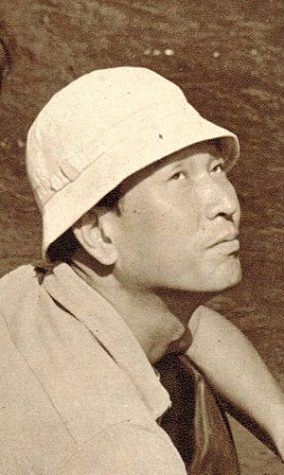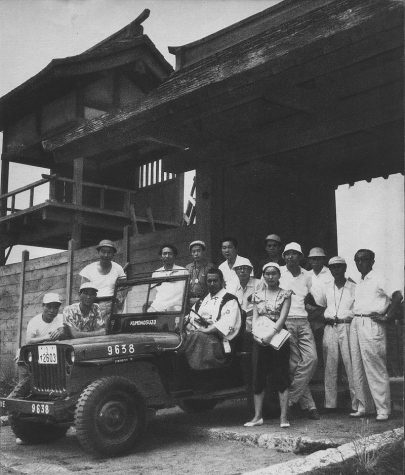The Stunning Works of Akira Kurosawa
March 25, 2019

This past Saturday, Mar. 23 marked Akira Kurosawa’s one-hundred-and-ninth birthday, nineteen years after his death.
Akira Kurosawa was a Japanese filmmaker prominent from the late ’40s to the ’90s. He is most well known for his Samurai films, which are reminiscent of American Westerns except featuring traditional Japanese warriors. Despite this, he worked on other types of films as well; from Ikiru to Red Beard, Akira has displayed his versatility as a filmmaker.
Instead of focusing on those films, I will be discussing the stunning Samurai stories Akira brought to the big screen, and honor the influence of this prolific director.
Seven Samurai
To begin this analysis, I will discuss “Seven Samurai,” which is probably Akira’s most influential film. The film has a simple plot, with a small town of farmers responding to an impending bandit threat by hiring Samurai to defend them. The film is a long epic, clocking in at a little over three hours.
The film’s action will be seen as wholly unrealistic by most moviegoers of today, with it being obvious that the blows do not make contact and with no blood being used for fights. Despite this fact, the movie still serves as a hallmark for action films.
The movie features a group of caricatures and stereotypes that were fairly new at the time. It featured a colorful cast of characters, from the farm hands to the samurai. Samurai ideals are present throughout the film, and the dialogue and scenes balance on the line between drama and comedy.
This movie was in the long line of collaborations between Akira Kurosawa and Toshiro Mifune. Toshiro presents an entertaining and electric character as a reckless, hotheaded samurai. Something present in many of Kurosawa’s Samurai films is that he includes a lot of his actors more than once, but none as much as the legendary Toshiro.
Although “Seven Samurai” is fantastic and spawned plenty of films based on it such as “The Magnificent 7,” “13 Assassins,” and a few other movies and shows where seven or so warriors defend an area from danger, it is not on the top of my list when discussing Kurosawa’s films.
Rashomon
Next is “Rashomon,” widely considered Akira’s best film. Although I do not agree with this sentiment, “Rashomon” was an engaging experience nonetheless. The film focuses on a central story of a woman and her husband being intercepted by a bandit played by none other than Toshiro Mifune.
The story follows the bandit who ties up the husband and is implied to have raped the wife. The most interesting aspect of this film is that it is told from four different perspectives. The first is from the bandit’s perspective, then the wife’s, and then the husband’s. The fourth perspective is somewhat of a secret.
This premise is riveting because Akira never clearly states which recount of events is true. There are some constants across the four stories, but they all differ in various ways depending on who is telling it.
It is an excellent and dark film, with Toshiro playing the part of a repulsive character. The movie is beautifully shot and includes one of the first instances of the handheld cam while a villager is going through the forest.
I am being a bit vague with details because I highly recommend this story, which is half the length of the major film “Seven Samurai.”
Yojimbo
Next, we shall examine “Yojimbo,” a fun and rustic film which introduces, in my opinion, Toshiro’s best character, Sanjuro. The movie focuses on Sanjuro, a rogue and masterless samurai who encounters a town experiencing a dry spell due to two rivaling gangs fighting there.
Sanjuro is intrigued by the conflict and decides to help the village by turning the two clans on one another. Sanjuro cleverly pits each clan together, and the movie is full of likable characters and despite its occasional intense nature, the film blends comedy and drama in classic Kurosawa fashion.
There is really only one word that can accurately describe Sanjuro: he’s cool. He’s usually calm and finds amusement in the violence the two gangs inflict on one another. He seems to approach the situation as if it were a game. Again we have Akira presenting beautiful camerawork and a riveting story. One of the most interesting shots in the movie is upon Sanjuro’s return when he faces off with the remaining members of one of the clans.
The camera is behind the clan members as they occupy about three-fourths of the frame, starting from the left of the frame to the right. In the last quarter of the frame is Sanjuro, slowly and methodically inching closer to them. The wind blows, and the battlefield is silent as he makes his stand against the gang.
The movie is excellent and even serves as one of the more violent Samurai films Akira has released, with blood and dismemberment being more present in the film. Although the violence still has a charming archaic nature, it is effective in being highly entreating and intense.
Throne of Blood
Next, we shall discuss one of Akira Kurosawa’s darkest Samurai epics, “Throne of Blood.” This is his beautiful and unique take on the Shakespearian story of “Macbeth,” with a Japanese twist on it.

This features Toshiro playing the lead again, and it is a beautiful story of manipulation, madness, and betrayal. The cinematography in this film is especially intriguing, from beautiful landscape shots to epic shots featuring swarms of extras and horses, and shots which work together to reinforce themes and the story.
The movie features little violence, except for a stabbing, and a man being shot full of arrows at the end, but it still has a dark and mature tone and serves as one of Akira’s beautiful Japanese renditions of Shakespeare’s work.
The next movie in this line is Sanjuro, named after the title character of Yojimbo, and it features that same title character in a different situation. This movie is much less violent but remains captivating in tone and with its characters and features an amazing duel at the end.
The duel is short but is satisfying because of the inner conflict the title character feels about it and the steady buildup to the fight throughout the rest of the movie. The movie is even funnier than its predecessor and despite less violence, is more crisply and tightly written, allowing for a concise and focused narrative.
Ran
This movie stands as one of my favorites by Akira Kurosawa. The next film in this long list, in fact, the last film, is called “Ran.” It is my favorite Kurosawa samurai film, and clocks in at 2 hours and 43 minutes. The movie is a long, epic “King Lear” adaptation in the same vein as “Throne of Blood.”
It is the violent, beautifully shot, brilliantly written, and heartbreaking story of a dying Great Lord who decides to split up his land evenly amongst his three sons, Taro (eldest), Jiro (middle), and Saburo (youngest). One of the trademarks for this movie is the color scheme. The brothers all wear three different colors, yellow for Taro, red for Jiro, and blue for Saburo.
The colors help bring clarity to the large-scale actions scenes as swaths of soldiers dawning the colors of the sons attack each other.
In the movie, Saburo seems to be the most likely to betray his father’s trust, due to his insolence and brutal honesty, but it is the other brothers Taro and Jiro who are driven mad by power.
Watching the Great Lord’s ascension into insanity and hysteria due to the betrayal of his sons is a heartbreaking and somber experience.
The movie is captivating until its last somber shot and shows Kurosawa at his best. I will not be covering the movie Kagemusha which served as almost a test run for this film.
Akira Kurosawa’s films are spectacles to behold, he was a director with exceptional versatility, even within the confines of Samurai films. He is often seen as one of the masters of cinema, and from his samurai films alone, it is not hard to see why.







